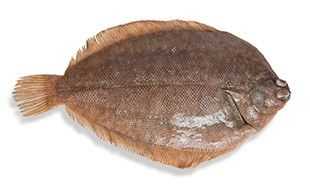C-O Sole

Species Details
Pleuronichthys Coenosus
Pleuronectidae
Pleuronectiformes
Flats
1 - 1 lbs.
10" - 14"
C-O Sole (Pleuronichthys coenosus) Fish Description
Also known as muddy flounder, popeye sole, and spot flounder, the C-O Sole belongs to the flatfish or righteye flounder family (Pleuronectidae). They are related to the Dover sole. Mexicans call them platija de fango.
C-O Soles are right-eyed; their eyes are large and bulbous and located near the tip of their snouts. A prominent ridge can be found between their eyes; their top eye occurs a little above their lower eye.
C-O Soles are generally muddy brown to black, though some may use camouflage and develop pink patches on their bodies to match their surroundings composed of pink coraline algae; most of the C-O Soles resemble the sandy bottom of the ocean. Their blind side is usually off-white in color. C-O soles have a distinctive dark spot on the middle of its upward-facing (eyed) side. Their anal fins have no spines but consist of 46 to 56 rays. Their dorsal fins extend to their heads and have 65 to 78 rays. Their caudal fins are rounded and deep. Mature C-O Soles lack swim bladders.
Diet and Size
C-O Soles love benthic invertebrates and fishes. They also prey on amphipods, mollusks, bivalves, and small fishes. Their favorite crustaceans are shrimp, crabs, brittle stars, polychaetes, and clams. The juvenile C-O soles feed primarily on shell-fish and small, live fishes. Their feeding season runs from June to July and September. They spawn during early spring and late winter; female C-O Soles’ eggs float near the surface of the waters.
The C-O Sole can grow up to 14 inches in length and one pound in weight. Despite their size, C-O Soles have a high quality of meat; they are best cooked pan-fried because they are difficult to fillet.
Interesting Facts About the C-O Sole
- The C-O Sole derived its name from the markings on its caudal fin that form a crescent shape and a ring, reminiscent of the letters C and O, respectively.
- C-O Soles are fished in California but not commonly targeted by commercial anglers in the Pacific Northwest.
- It is easy to identify C-O Soles because of their protruding eyes, unique markings, and remarkably-shaped tails.
- The Greek word pleuron means ‘side’, while ichthys means ‘fish’; the Latin coenosus means ‘muddy’.
- They can adjust their body coloration based on their environment.
Fishing Techniques
C-O Soles are quite difficult to catch because of their very small mouths. Anglers can use size 4 hooks (or smaller) with bloodworms, ghost shrimps, and lugworms as baits. Other attractive baits for C-O Soles would be strips of squid, cut anchovies, and pieces of clam. C-O Soles have a high quality of fish meat, but anglers occasionally catch them even in deep waters, and even more rarely from the shore. The best fishing pier spots for C-O Soles are the Newport Pier, Redondo Beach Pier, Balboa Pier, Monterey Wharf 2, and Hueneme Pier.
Habitat and Distribution
C-O Soles are a demersal fish; meaning, they live in rocky, sandy areas and flat bottoms as deep as 1,148 feet. They can also be found in algae. They like shallow water areas in bays.
C-O Soles occur naturally in the subtropical eastern Pacific waters, ranging from Alaska to Baja, California. They can also be found in Japan and North America.







